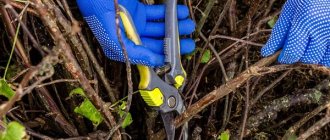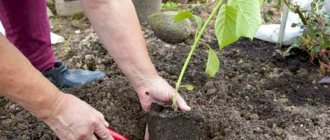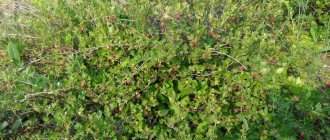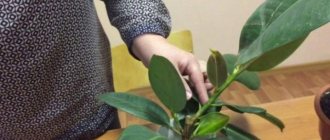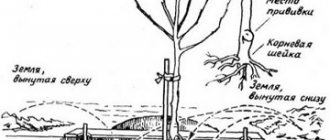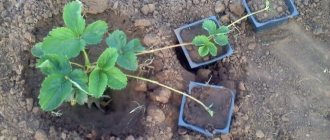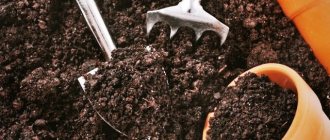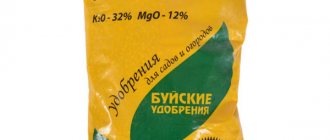Currant is a sweet and sour berry that many adults and children adore. And this is not surprising, because it contains a large amount of vitamins, especially vitamin C, group B and PP, as well as other useful macro- and microelements. However, in order for a berry bush to delight you with its abundant fruiting every year, it requires proper care throughout the growing season, and most of all after winter, when the plant is just waking up and needs care more than ever.
How should you care for currants in the spring to ensure a good harvest?
Below you will find current tips and recommendations that will help you carry out proper spring care for black currants (in general, there are no fundamental differences in caring for red and white currants).
Removing cover and removing debris
Shelter for currants
If the currants have been insulated for the winter, care for the currants begins by removing the protective material. An increase in air temperature and humidity provokes the formation of mold on the wood under the thermal layer. Putrefactive infections become more active and can attack a plant weakened after wintering.
The next step: remove last year's leaves, debris, and mulch remnants from the tree trunks. If this is not done in time, pathogenic bacteria can spread from the rotting plant litter to the bush and infect it. Collected garbage should be burned or transferred to a compost heap.
Methods and types of feeding
Nutrients can be added in two ways:
- Kornev.
- Foliar.
The most popular and effective is the root method, although in some cases the foliar method allows one to obtain better results.
Root feeding
Rooting involves watering the bush under the root with a nutrient solution, or adding dry granules into the hole, followed by sprinkling with soil and watering abundantly. Gradually dissolving under the influence of watering or rain, the granules provide the bush with the necessary nutrients for several weeks.
Foliar feeding
Foliar feeding involves spraying the leaves with a fertilizer solution. Foliar feeding is less effective than root feeding. Most often they are used as needed, when any problems arise with the plant. They are usually used in the summer.
Setting an insufficient number of berries in cold weather is due to the fact that even if the necessary beneficial elements are present in the soil, they may be poorly absorbed due to the low temperature. The optimal solution in such situations may be to spray the leaves and flowers with nutritional compounds.
Sanitary pruning of currants
Currant pruning schemes
Caring for black currants in early spring involves sanitary pruning. If the procedure for rejuvenating old bushes and forming the crown was not carried out in the fall, this is done in the spring before the buds awaken. Step-by-step trimming instructions:
- Remove dry, broken, frostbitten branches.
- Cut off branches older than 4 years at the root - they do not bear fruit well.
- Remove thin young shoots growing from the root of the bush. These shoots produce small, sour berries.
- Cut out annual branches, leaving 3-4 strong vines.
- Trim the tops of annual shoots by 10-15 cm. Make the cut 0.5 cm above the intended bud so that it does not dry out.
- Eliminate 2-3 strong branches on an old bush if it has produced little growth over the past 2 years.
- Trim shoots growing inside the bush so that sunlight reaches the central part of the crown.
- Remove all swollen buds that look like peas, since female bud mites, the main pest of currants, can overwinter there.
Spring propagation of currants
Propagating currants in the spring is as easy as in the fall, but you will have to monitor the plantings more often - not allowing the soil to dry out, but also not allowing it to become waterlogged. To propagate currants in the spring, the shoots remaining from pruning need to be cut into pieces approximately as long and thick as a pencil. Next, they should be placed in a solution of Epin, Heteroauxin or another growth stimulator for a day, having read the instructions for diluting this drug in advance, and while they are soaking, prepare the bed. The soil in the garden bed needs to be leveled, all weeds removed, a tablespoon of nitroammophoska added per square meter and cuttings planted - black currant cuttings at an angle of 45 degrees towards the north, so that the southern side is illuminated by the sun, and the cuttings of “colored” currants are strictly vertical, so so that three or four buds remain on the surface. Subsequently, a new bush is formed from each shoot, retaining all the parental characteristics.
Loosening and mulching
Loosening currants in spring
To saturate the currant root system with oxygen, it is important to periodically loosen the soil around the trunk. It is important to proceed carefully so as not to damage the roots. The depth of loosening is 15-20 cm. Simultaneously with loosening, weeds are removed. They draw a large amount of nutrients from the soil that currants need.
Mulching the tree trunk keeps the soil moist, thereby facilitating better absorption of nutrients by the roots. It prevents the germination of weeds by blocking light from reaching them. The following is used as mulch:
- straw;
- fresh cut grass;
- compost;
- humus;
- peat.
How to loosen under bushes correctly
Loosening is required to break the earthen crust and allow air and moisture to reach the roots. First, the tree trunk circle is cleaned, then watered. After absorbing the water, they loosen no deeper than 5 cm. The same loosening is done after fertilizing.
To prevent the top layer of soil from drying out and to provide warmth during cold weather, a mulch layer is laid on top. This is humus, mature compost, mowed green manure or grass, straw or sawdust. Some gardeners cover with black non-woven material.
Watering currants in spring
Spring watering of currants
To get juicy, sweet currant berries, in early spring the bushes must be watered, following these rules:
- Watering schedule: 1 time per week.
- Water consumption – 3 liters per bush.
- The plant should be watered in the evening with settled water at a temperature of 23-25 °C.
- Moisten the soil around the trunk evenly (do not pour liquid into the center of the bush).
- Stop watering as soon as the ovaries begin to color so that the berries do not crack from excess moisture.
To water or not
Black currants have their roots close to the surface, so there is often enough moisture after the snow melts. If you start watering, the additional moisture will cause rotting of the roots or the spread of diseases, so you should not water. Watering is only required in dry weather or when there is little snow cover and the soil is dry by mid-spring.
In order for there to be a lot of berries and enough for winter harvesting, adult plants, from 3 years old, require 4-5 buckets of melt or rain, not ice, water. 1 bucket is poured under the young bushes.
The first time is usually watered when the currants form ovaries or bloom. In dry weather, it is worth watering after 7-10 days so as not to wet the branches and leaves, and the soil is saturated with moisture to a depth of 35-40 cm.
Disease Prevention
Ash for watering currants
Caring for currant bushes in the spring involves preventive treatment against diseases. As soon as the snow melts, the plants are scalded with boiling water from a watering can (10 liters per bush). This will not harm the “unawakened” currants. This is how they destroy the eggs of aphids and other harmful insects that have overwintered in the bark and buds. For preventive spraying of bushes against pests and diseases, folk remedies are suitable:
- Pour boiling water over 250 g of ash and leave for 2 days. Dilute the concentrate with 10 liters of water, add 50 g of liquid soap, stir.
- Steam 200 g of onion peels in 10 liters of boiling water. Leave for 2 days, strain.
- Grate a bar of laundry soap, add a bucket of hot water, stir until the ingredient dissolves. Add 20 tbsp. spoons of soda, stir.
If last season the currants were affected by diseases or pests, for prevention it is necessary to spray the bushes with pesticides:
Fitoverm for the protection of garden plants
- Fitoverm against aphids, spider mites, thrips, flower beetles. Dilute 2 ml of the drug in 1 liter of water at room temperature. Consumption – 1 liter of working solution per bush.
- Thiovit Jet against powdery mildew. Dosage – 50 g per 10 liters of water. Spray after flowering.
- Mites caused by spider mites, red fruit mites, and bud mites. Working solution – 2 ml of insecticide per 10 liters of water. Consumption – 1 liter of working solution per bush.
- Bordeaux mixture for anthracnose, rust, spotting. Before the buds swell, you need to treat the bushes with a 3% solution of the chemical. It is prepared in plastic containers. Dissolve 300 g of copper sulfate in 5 liters of water, gradually adding liquid. In a separate bowl - 300 g of lime per 5 liters of water. Pour the copper sulfate solution into the milk of lime in a thin stream, stirring constantly.
- Actellik against spider mites, aphids, thrips. Dosage – 2 ml of the drug per 1 liter of water. Consumption – 1.5 liters of solution for 10 m² of currant planting.
Features of spring care
Probably the first question that a novice gardener and gardener will have is why do bushes need quality care? After the winter cold, the plant is weakened, it needs to recover in order to begin sap flow, bud opening, and flowering with renewed vigor.
You need to start caring for black, white and red currant plantings in the garden when the temperature remains at least 5 degrees Celsius. You should not postpone care activities, otherwise it may be too late (the buds will swell) and garden activities will not be as effective, and some can no longer be carried out.
By the way! Spring care for the red, white and black varieties is not fundamentally different. Therefore, you can use the tips described below, regardless of what kind of shrub you have.
Fertilizer application
Caring for currants in the spring involves applying mineral fertilizers. Nitrogen fertilizer is applied as soon as the buds begin to swell. 1 tbsp. a spoonful of urea is dissolved in 10 liters of water. Along the radius of the crown, a ditch of 15-20 cm is dug in the ground and a nutrient solution is poured into it. Nitrogen is necessary for currant bushes to grow green mass, which contributes to organic plant nutrition.
Feeding should be repeated after flowering to form large clusters. It is useful to feed old currant bushes in the spring with organic fertilizers: 5 kg of humus or compost per bush. The fertilizer is lightly mixed with the soil around the tree trunk. When watering, beneficial substances will dissolve and be absorbed by the roots.
Fertilizer for currants
Foliar feeding
To saturate the plant with microelements, foliar feeding of the bushes is carried out in the spring. This will make the berries larger and sweeter. Spray plants in cloudy weather. Fertilizing is carried out before the crop blooms and after the formation of ovaries. To prepare a complex fertilizer, you need to dissolve the following components in 10 liters of water:
- boric acid – 2 g;
- copper sulfate – 2 g;
- zinc sulfate – 2 g;
- manganese – 5 g.
Treatment of currant bushes from diseases and pests
The most harmful pest on currants is the bud mite; it can affect large areas in the berry garden. An increase in the pest population significantly reduces annual currant yields; over time, the berry plant degenerates.
In March, the female bud mite lays microscopic eggs in currant buds, which visually increase in size compared to healthy ones. The plant is harmed not only by the developing population of pests that eat the bud from the inside; in parallel, viral diseases develop, the pathogens of which are carried to different parts of the plant through the flow of juices.
The affected bud has a swollen and enlarged shape, so it is visually easy to identify on currant branches.
March is the best time to remove pest nests. If you pluck out infected buds, you can immediately remove a pest nest with numerous parasites. Such care in the spring is important for black, red and pink currants - all varieties of berry crops have identical pests and similar control measures. Important! The swollen currant buds are plucked out with your fingers and burned.
The next preventive means of caring for currants in the spring is practiced by many gardeners - this is the spring treatment of berry bushes with boiling water. You can process not only currant bushes, but also gooseberries. This procedure will allow you to get rid of many pests, among which in the first place are bud mites, gold borers and aphids, and the method also helps to reduce the infection of the plant with fungal and viral infections.
Important! The procedure for irrigating currant bushes with boiling water can be carried out strictly until the buds swell.
Caring for red, white and black currants
Currant berries, which are black in color, contain 4 times more vitamins than others, the leaves have a characteristic fragrant smell and are suitable for making tea, and they are more demanding to care for.
Black currant planting and care in open ground is demanding on soil and amount of moisture, grows poorly in sandy, saline or acidic areas, red and white currants are less demanding on soil composition and moisture, their root system is stronger, lies deeper and spreads wider in the ground . Therefore, the layer of mulch for red may be less.
Red, black, white currants
Black currant is more susceptible to diseases and pests, and the degeneration of the bush occurs earlier; it requires attention to the formation of the bush and avoidance of thickening. Currants, which have red berries, bear fruit throughout the entire bush, and cutting off the tops to reduce the length of the bush will not harm the yield. The black one has a large concentration of berries - from the middle of the bush to the top.
In black currants, berries form on the shoots for 2 years, and in red and white ones - 3-4 years, so pruning of crops will be different; if the growth of the red currant shoot is no more than 10 cm, and the growth of the branch is directed inward, such branches are removed, leaving the shoots , who increased their height by 30 cm during the season.
Features of the structure of currant bushes of different colors
Red and white currants can be planted more compactly, 1.5 m apart, for black currants the distance between the bushes should be 2 m in order to reap a rich harvest. Currants of different colors are not planted side by side.
For red currants, shallow spreading of fertilizers is not suitable because the roots go deeper than black currants.
